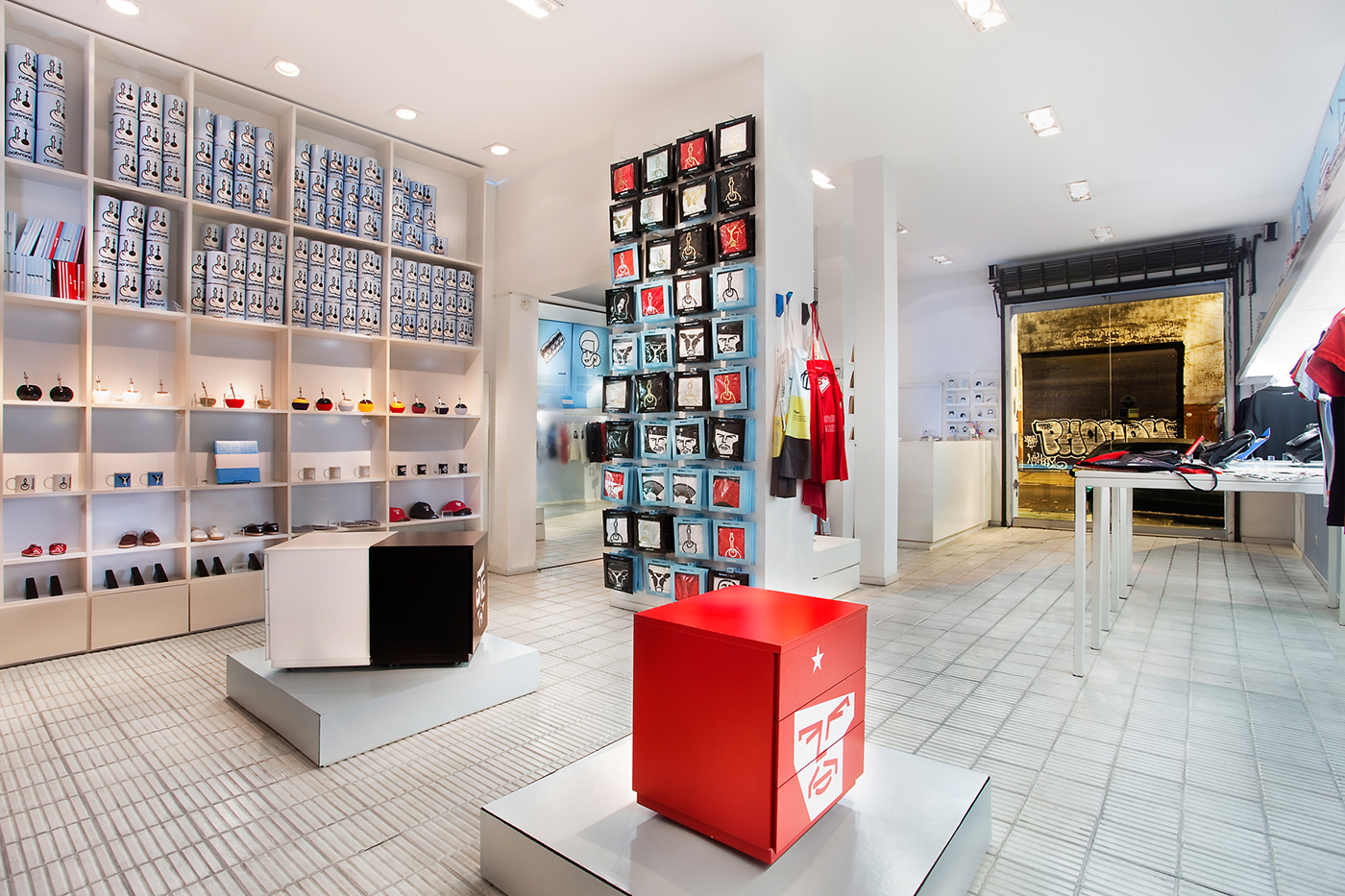Nobrand
The finest Argentine identity synthesized in a complete collection
The finest Argentine identity synthesized in a complete collection
From the tango to Che Guevara and from the obelisk to the empanada, argentine identity is a complex concept that is constantly evolving. Its interior expresses, with a varying degree of force, a multi-colored set of originating icons of history, art, geography, cuisine and tradition.
“idarg, argentinean identity,”, was declared to be of cultural interest by the Secretary of Culture of the Nation and was selected as a case study of the best branding projects by TASCHEN, for its book Logo Design.
“idarg, argentinean identity,”, was declared to be of cultural interest by the Secretary of Culture of the Nation and was selected as a case study of the best branding projects by TASCHEN, for its book Logo Design.
The project was designed by a multidisciplinary team with the objective of presenting Argentina from a different angle. Through the analysis of argentinean identity, the visual manifestation resulted in a repertoire of icons that synthesize and communicate the idiosyncrasies of the national self.
The brand Nobrand converted this iconography into an innovative line of products and objects, textiles and graphics that accentuate argentine design.
www.nobrand.com.ar
www.nobrand.com.ar

Glorious ending of the American continent. Vast territory with four climates and all the possible geographical sights, inhabited mainly by European immigrants who arrived at the end of the 19th century and the beginning of the 20th. Only country in the world known in the rest of South America for its arrogance, in USA for its scientists, in Europe for its beauty, culture and elegance, and in all the world for Maradona. The Argentinean people are optimistic but complaining by nature, accustomed from birth to constant uncertainty.

A piece of the heart one carries with him whose specific weight varies according to the different issues one faces. It is also the territory that many Argentineans want to leave as most of us do not really feel definitely at home here yet. Paradoxically, the light blue and white symbol created by Belgrano was inspired by the sky and its clouds, but our patriotic feelings are often “more cloudy” than “clear.”

The highest mountain in America. It is coveted by climbers all over the world who try to reach the summit through its normal paths –easier than those of the Polish glacier– which is in fact quite a challenge: Once 6959 meters high, the cold is almost unbearable, there’s a lack of oxygen and the backpack weighs a ton. The upside is that the view from the top is amazing, the downside is that you have to go up to experience it.

It is an impressive “ice monster;” sky blue wonder that falls over the Argentino lake making a deafening sound. Icon of national tourism: everybody talks about it but very few people have actually visited it. Once there, you feel a foreigner in your own country, surrounded by ecstatic tourists who find it impossible to pronounce its name.

A natural wonder that consists of an enormous quantity of water which impresses you the first day of your visit, entertains you the second one, and becomes tiring by the third. It is a great tour for July, as in the summer the heat is almost unbearable. Even though it may sound cliché, Argentina has the best falls and Brazil enjoys the best views of the place.

Seaside resort chosen by a large number of Argentinean people to spend some days on the beach. Also known as “Mardel” or “the happy place,” Mar del Plata once tried to be the South American Biarritz, and nowadays it has become synonymous with casinos, musical theatre, “alfajores” and woolen sweaters. At present, this city has one of the highest rates of unemployment in the country, and therefore its former “happiness” has been seriously beaten. However, many people still drive their cars along the Route nª 2, even after it was turned over to private hands.

It is a vast plain all over the provinces of Buenos Aires, Santa Fe, the south of Córdoba and La Pampa which is full of cows and crops. Besides its fertile soil and its farming richness, this area can be described as an endless territory crossed by drivers heading north or south. Closely linked to our contradictory identity, the “pampas” are represented by the big estates, the crops, the country... All in all, it is a mixture of fresh air, identical sunsets, homemade food and deep boredom.

A brownish and unattractive bird, also known as “worker,” due to its capacity to build very solid mud nests. As it is accustomed to human presence, it is habitual to spot its nests on roofs, telephone posts and fences. In the country, these nests are considered to be good omens for the future crops. This animal fought for its place as the National bird of Argentina with the majestic condor. Regardless of the fact that the baker bird is faithful, hard-working and even incubates the eggs together with the female bird, we still wonder how it won.

Inexhaustible natural resource of our “pampas.” It is the constant frustrated hope of a country which has already been “the barn of the world,” and a place where it is common to overhear that if you accidentally throw a seed it grows. That myth is still alive at present, despite the fact that the agriculture and the breeding of cattle have been seriously punished in the last decades by floods, hyperinflation, devaluations, new taxes and all sorts of calamities.

Man on horseback of the “pampas” who lives with his dog and his girl. He is not regarded as a hard worker, but he is said to be a very manly person with good feelings. That is why he is considered the first “Argentinean macho.” The “gaucho” has its own literature, and his figure is clearly depicted by the well-known Martín Fierro. On the other hand, Inodoro Pereyra, a comic character created by Fontanarrosa, has also contributed to the growth of the fame of the “gaucho.”

First inhabitant of the American continent, named “indio” by Columbus , who was convinced that he had arrived in the Indies. This misunderstanding did not help them either in the hands of the Spanish, as the “indios” had the same fate as the Mayas, Incas or Aztecs. The only survivors at present –descendants from guaraníes, tobas or mapuches– can hardly make a living in the so-called Indian reservations.

It is a rectangular blanket with an opening in the centre which enables you to put your head through it. The gauchos used it to keep warm, and if it was rolled around the left hand, it was a useful defense against the knife of the enemy. It became a blanket in the cold nights and a raincoat in the wet season. There’s a popular saying that refers to a remote location when you say that a certain item is “where the devil lost his “poncho.

It is a sport played by horse riders who form two teams of four members each and try to score goals hitting a ball with a wooden stick against the willows. Although it is not a native sport, the level of our players and horses turned the National Championship into one of most important ones in this discipline. It is an extremely elegant sport also associated with the breeding, promotion and sale of horses. The relationship Heguy-Sultán de Brunei is an example of the profitable success of this business. It is an ideal spot to be seen and to meet young men and women (the ladies are older than 25, the gentlemen are ... older).

The “Diego.” Argentinean materialization of God.









